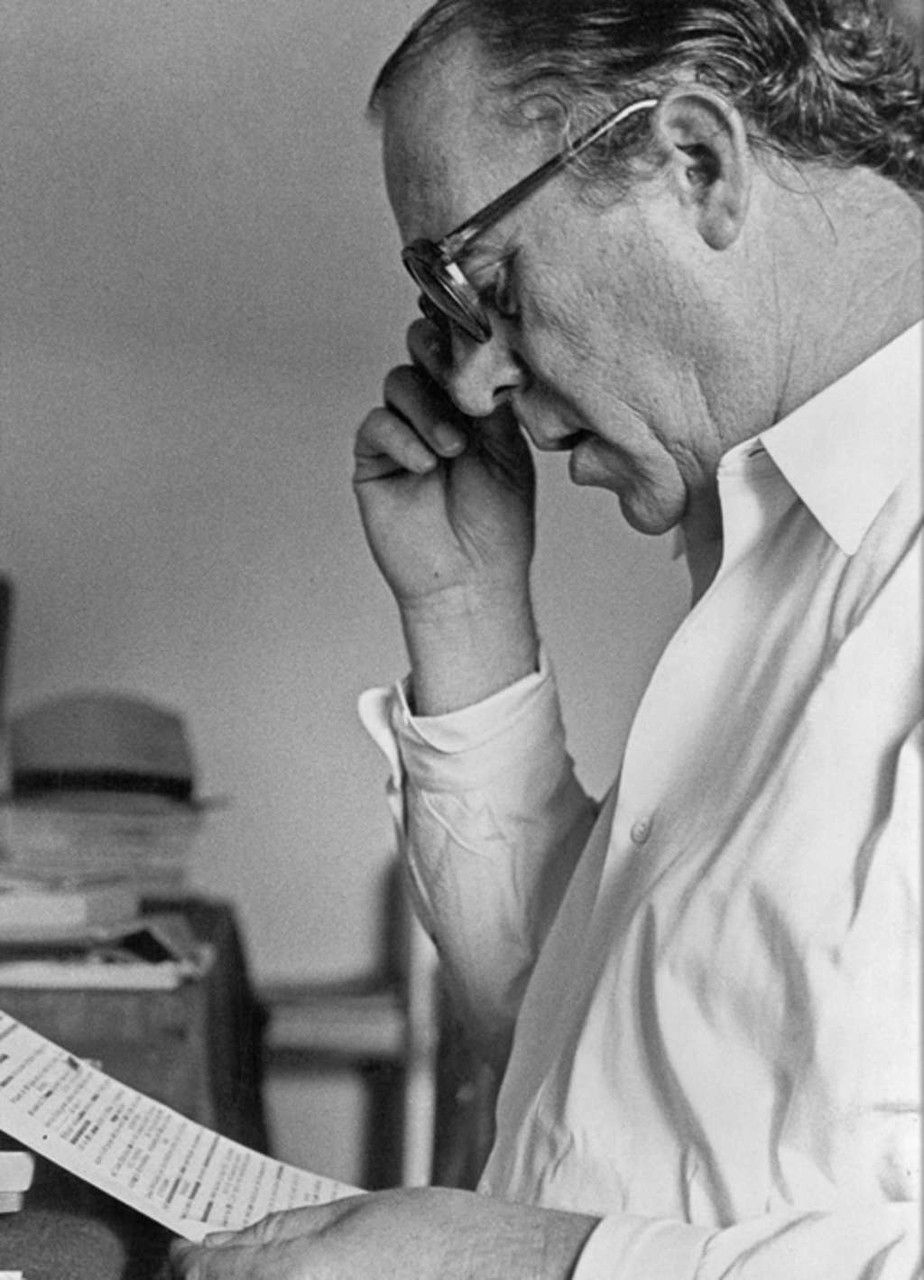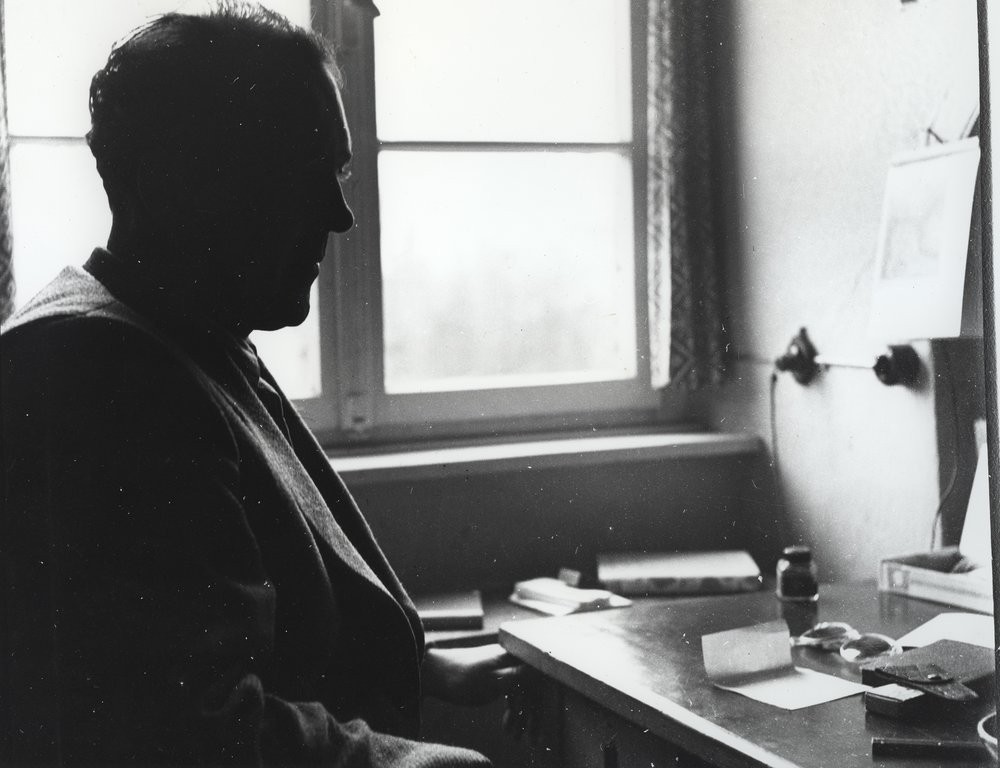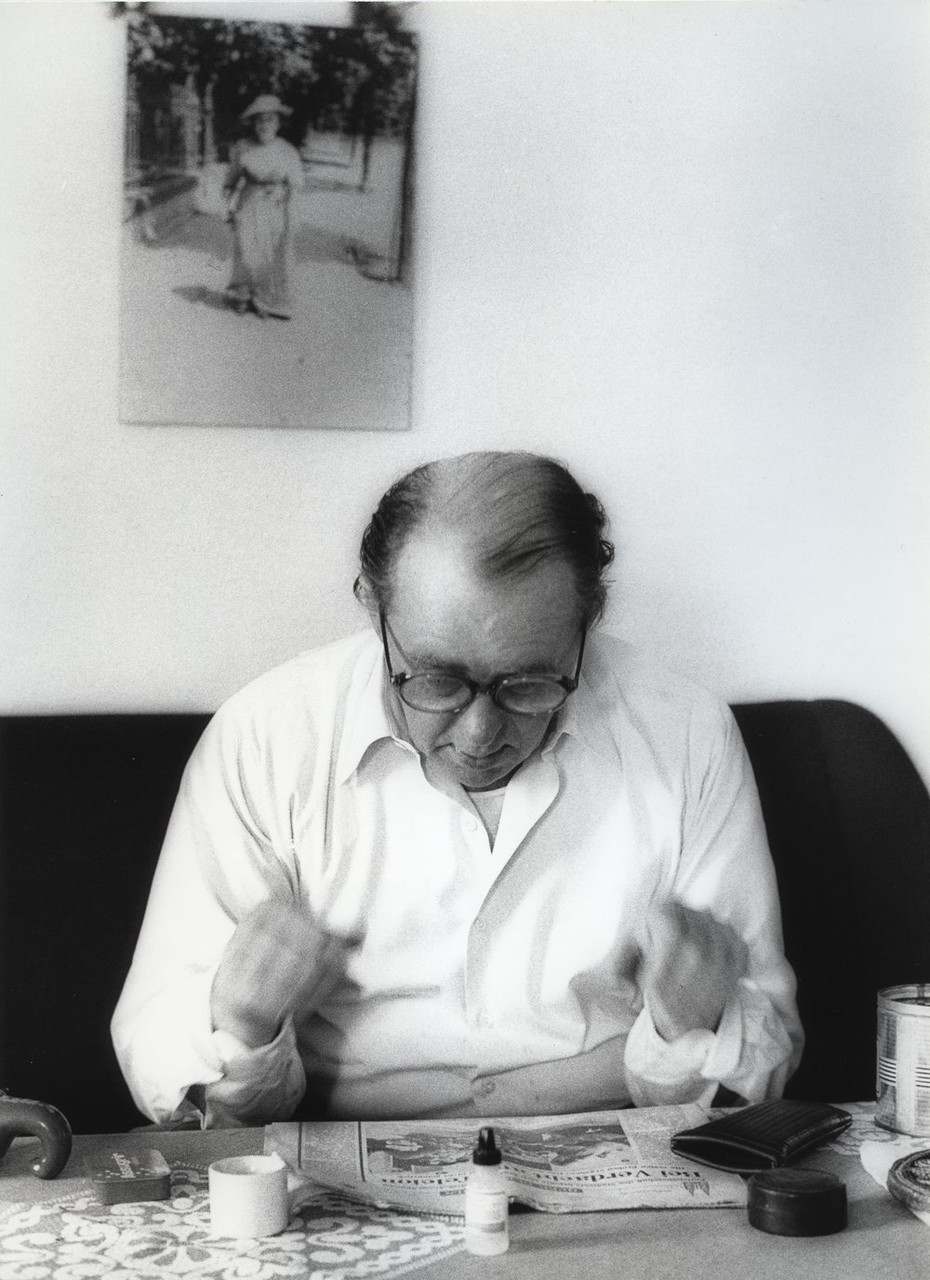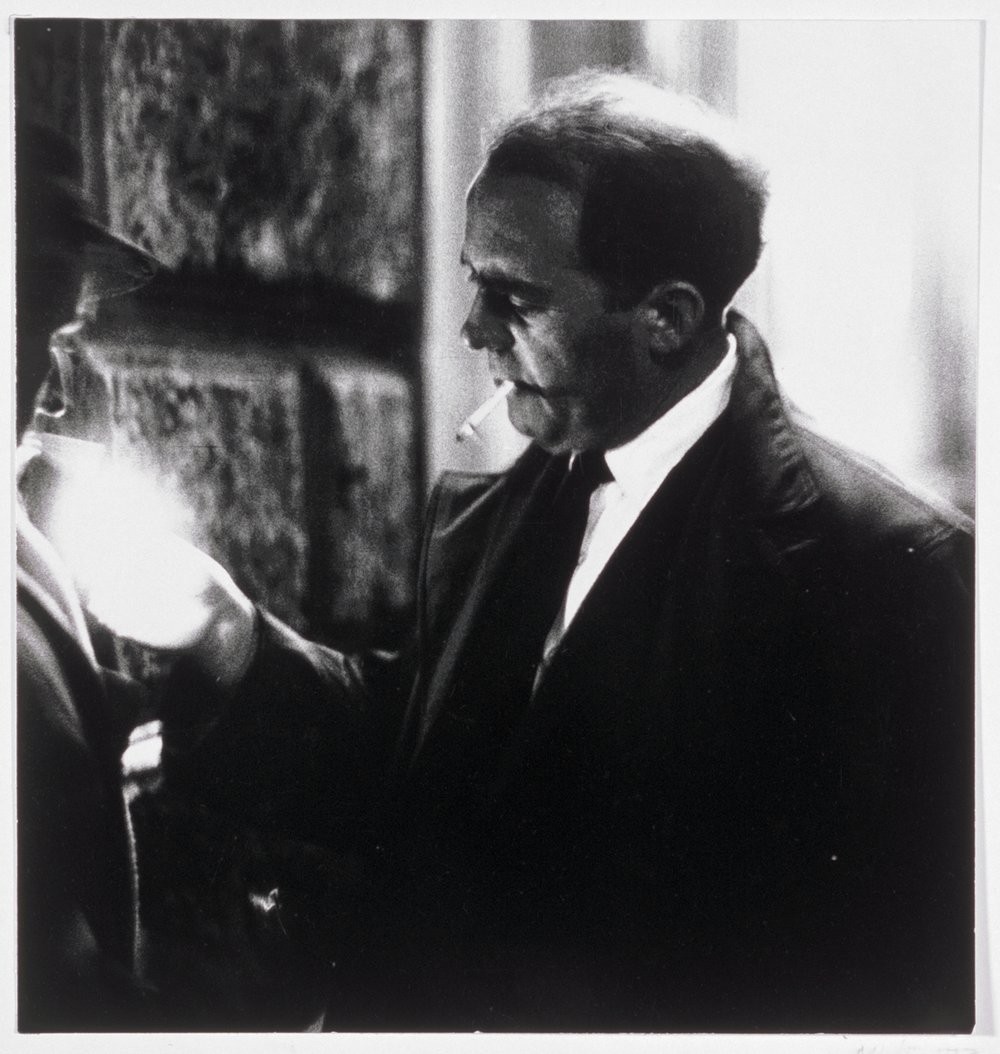Heinrich Böll
The Humane Camera.Heinrich Böll and Photography
01 Sep 2017 - 07 Jan 2018

Heinz Held, Heinrich Böll with manuscript, 1953, © Museum Ludwig, Cologne, Photo: Rheinisches Bildarchiv Köln, Cologne

Heinz Held, Heinrich Böll at his desk, 1953, © Museum Ludwig, Köln, Photo: Rheinisches Bildarchiv Köln, Cologne

Heinz Held, Heinrich Böll in Langenbroich, with a photograph of Rosa Luxemburg in the background, 1971, © Museum Ludwig, Köln, Photo: Heinrich Guttmann

Chargesheimer, Heinrich Böll, around 1959, © Museum Ludwig, Köln, Photo: Rheinisches Bildarchiv Köln
HEINRICH BÖLL
The Humane Camera.Heinrich Böll and Photography
1 September 2017 – 7 January 2018
On the centenary of Heinrich Böll’s birth, in its new rooms for photography the Museum Ludwig will examine Böll’s relationship to photography and taking photographs—as a public figure, as an object of study, as an aid to his literary work, and as a motif in his writings.
One year after Heinrich Böll’s death, in 1986 the Museum Ludwig was opened in a newly constructed building. The address: Heinrich-Böll-Platz. The museum’s photography collection contains numerous works that show Heinrich Böll. After all, as an author he was a sought-after subject for photographers. During Böll’s lifetime, two volumes of portraits of him photographed by Heinz Held, among others, were published. Böll maintained a friendship with Held and also allowed him to document his private life—a remarkable exception, since Böll tended to be camera-shy. A selection of portraits of Böll from Heinz Held’s estate will be presented for the first time.
Yet texts by Heinrich Böll appeared during his lifetime in nine photo books, revised or reprinted, such as in Chargesheimer’s Unter Krahnenbäumen, Im Ruhrgebiet (both 1958), and Menschen am Rhein (1960). In 1964 Böll published his essay “The Humane Camera” in the catalog for the Wel-tausstellung der Photographie. In it he formulated a morality of photography: “When the camera is intrusive, when its instrument, the lens, becomes the instrument of the photographer who aims to catch, denounce and expose someone, photography crosses its aesthetic and moral boundaries.” He also speaks of “violations.” And such a violation is transformed into literature in The Lost Honour of Katharina Blum (1974, English translation 1978), when words and images in the yellow press rob Blum’s dignity. The humane, the quality of being human—therein lies Böll’s interest in literature as well as in photography. After all, on one thing he is clear: “I don’t care much for lavish photo books.” To him, seeing was the central sense to understanding the world: “... a good eye is one of the writer’s tools,” he states in “Bekenntnis zur Trümmerliteratur” (1952). For his novel Women in a River Landscape (1985, English translation 1988) Böll asked his son René for photographs of selected places in Bonn, which he then described in the novel. Photographs and corresponding passages from his writings will be combined in the exhibition. Böll’s relationship to photography is also re-flected in his novels and stories about photographers and photographs. Photography continually appears as a motif and a metaphor, most prominently in “Anecdote Concerning the Lowering of Productivity” (1963). With some fifty exhibits including pictures, books, and texts, the exhibition will showcase Böll’s varied engagement with photography.
The Humane Camera.Heinrich Böll and Photography
1 September 2017 – 7 January 2018
On the centenary of Heinrich Böll’s birth, in its new rooms for photography the Museum Ludwig will examine Böll’s relationship to photography and taking photographs—as a public figure, as an object of study, as an aid to his literary work, and as a motif in his writings.
One year after Heinrich Böll’s death, in 1986 the Museum Ludwig was opened in a newly constructed building. The address: Heinrich-Böll-Platz. The museum’s photography collection contains numerous works that show Heinrich Böll. After all, as an author he was a sought-after subject for photographers. During Böll’s lifetime, two volumes of portraits of him photographed by Heinz Held, among others, were published. Böll maintained a friendship with Held and also allowed him to document his private life—a remarkable exception, since Böll tended to be camera-shy. A selection of portraits of Böll from Heinz Held’s estate will be presented for the first time.
Yet texts by Heinrich Böll appeared during his lifetime in nine photo books, revised or reprinted, such as in Chargesheimer’s Unter Krahnenbäumen, Im Ruhrgebiet (both 1958), and Menschen am Rhein (1960). In 1964 Böll published his essay “The Humane Camera” in the catalog for the Wel-tausstellung der Photographie. In it he formulated a morality of photography: “When the camera is intrusive, when its instrument, the lens, becomes the instrument of the photographer who aims to catch, denounce and expose someone, photography crosses its aesthetic and moral boundaries.” He also speaks of “violations.” And such a violation is transformed into literature in The Lost Honour of Katharina Blum (1974, English translation 1978), when words and images in the yellow press rob Blum’s dignity. The humane, the quality of being human—therein lies Böll’s interest in literature as well as in photography. After all, on one thing he is clear: “I don’t care much for lavish photo books.” To him, seeing was the central sense to understanding the world: “... a good eye is one of the writer’s tools,” he states in “Bekenntnis zur Trümmerliteratur” (1952). For his novel Women in a River Landscape (1985, English translation 1988) Böll asked his son René for photographs of selected places in Bonn, which he then described in the novel. Photographs and corresponding passages from his writings will be combined in the exhibition. Böll’s relationship to photography is also re-flected in his novels and stories about photographers and photographs. Photography continually appears as a motif and a metaphor, most prominently in “Anecdote Concerning the Lowering of Productivity” (1963). With some fifty exhibits including pictures, books, and texts, the exhibition will showcase Böll’s varied engagement with photography.
